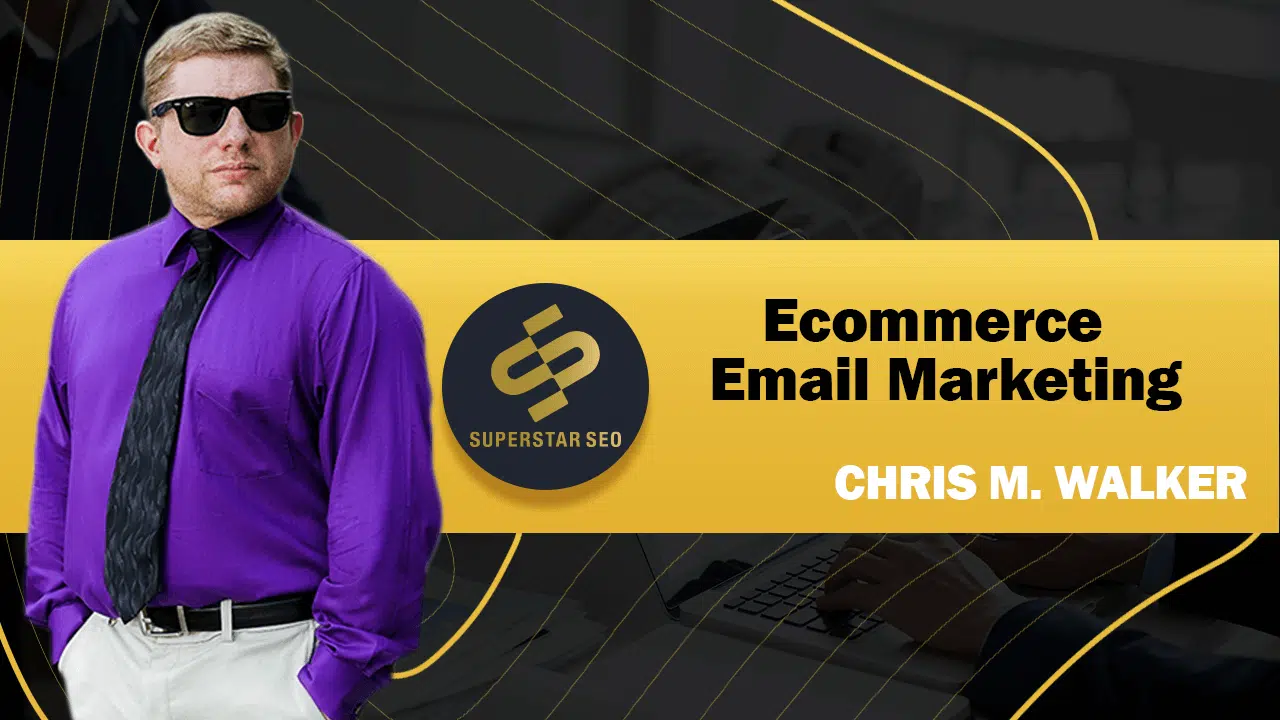Ecommerce Email Marketing: Turn Subscribers Into Salivating Buyers
The tech world says that email marketing is dead.
However, the marketing world presents different statistics:
- The average email subscriber is worth $48.87 (DMA)
- Email marketing’s ROI is 36:1 (Constant Contact)
- The high ROI is the reason why marketers consider email very important (DMA)
More importantly, running an independent eCommerce store gives you access to data that no one else has on the web.
You have customer information that gives you an edge in the competition.
With customers’ email, you can build value, create engaged relationships, increase customer lifetime, and successfully predict the trajectory of your business.
But let’s start from the basis.
What’s Email Marketing?
Email marketing is the digital marketing practice of messaging prospects and customers to build loyalty, sell, or educate through email.
Email marketing is critical in eCommerce because it allows you to send:
- Transactional messages
- Promotional messages
- Lifecycle message
That begs the question:
Why is Email Marketing Campaigns the Key to Ecommerce Campaign
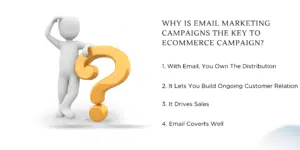
Email campaigns allow you to engage and retain customers better than other channels. After all, even a visitor from highly targeted traffic never returns unless you do something to keep them coming back.
However, why does email works well?
#1. With Email, You Own The Distribution
Email marketing isn’t centralized.
When a new subscriber signs up to your list, you get direct access to the person’s inbox.
That isn’t the case with platforms like Facebook, Twitter, Instagram, or search engines. Changes in the algorithms of these channels can derail your distribution strategy.
In fact, organic reach for Facebook pages has declined since 2013 because the platform continues to focus its News Feed on promoting content from friends and family.
In search engines, climbing the search ranking is harder with advertisement and answer boxes, resulting in a noticeable increase in no-click searches, especially on mobile.
#2. It Lets You Build Ongoing Customer Relation
Search engines and social media platforms are excellent in getting future customers, but email is the best way to maintain and strengthen existing relationships.
Email is also critical in encouraging customers’ next and future purchases.
Repeat customers are important for many businesses because they lower customer acquisition costs.
#3. It Drives Sales
People want to get marketing messages via email. After all, no one goes on social media to see ads.
On the flip side, people don’t mind marketing messages in their emails. In fact, they expect them.
For that reason, eCommerce email campaigns outperform alternative channels.
Hubspot’s study found that 86% of consumers prefer email-based marketing messages over social ads, TV commercials, and display ads.
#4. Email Coverts Well
No doubt email converts well. However, does that translate into high revenue?
Yes.
There are only three ways to grow revenue on your eCommerce site:
- Increase the total number of customers
- Increase the total number of purchases per customer
- Increase the average order value
Email marketing offers a viable way to influence all three growth multipliers at the same time. For instance:
- Automated welcome and abandoned cart emails can increase the conversion rate.
- Win-back and bounce-back email marketing strategies can increase the number of a customer’s purchases.
- Lifecycle email marketing campaigns and broadcasts can automatically highlight high-value products to the right customers.
Combining the three email campaigns can compound your results — a reason enough to start eCommerce email marketing campaigns.
Related – Social Media Ecommerce
How Do You Start Ecommerce Email Marketing
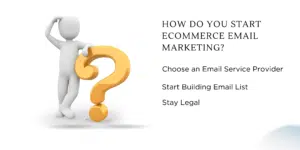
Any email marketing strategy starts with:
- Choosing an email marketing software
- Establishing a plan to generate new subscribers
- Understand how to send emails legally
Choose an Email Service Provider
Your first step to eCommerce email marketing is choosing an email marketing tool to start building your list.
Outside there are lots of cost-effective email marketing tools. Pick a well-reviewed solution that fits your need in terms of:
- Pricing
- Drag-and-drop editor
- Email templates
If your store is on Shopify, you already have Shopify email integrated into your store. If not, you can use:
- Klaviyo
- Mailchimp
- AWeber
- Hubspot
- Jilt
- Omnisend
After choosing an email provider, move to the next step.
Start Building Email List
The wisest online marketing decision you can make is to start collecting email addresses as early as possible. This begs the question:
How Do You Build an Email List Fast?
- Set a landing page on your website (to invite visitors by entering their email addresses).
- Collect emails from sales and customer accounts (provide the option to create an account after the customer’s first order. You can also send direct invitations encouraging them to activate an account after completing the purchase).
- Create opt-in forms across your eCommerce website (Your site’s header, navigation, footer, about us page, blog or resource pages, or pop-up form).
- Accelerate signups with lead magnets (Offer exclusive deals and discounts, runs sweepstakes or contest, or offer access to educational content).
Stay Legal
The relationship you build with your email list needs to be permission-based — from a marketing standpoint and a legal one too.
Assuming the law can attract serious fines, so familiarize yourself with the following rules and regulations:
- The General Data Protection Regulation (GDPR), which protects personal data for people within European Union
- The Controlling the Assault of Non-Solicited Pornography and Marketing Act (CAN-SPAM), which sets rules around commercial email.
- Canadian Anti-Spam Legislation (CASL) that protects Canadians
You may also like – Best eCommerce Marketing Tools in 2022
Types of Email Marketing Campaigns to Send
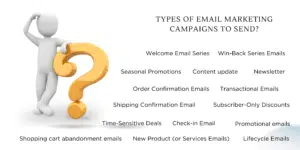
You want to:
- Send emails with relevant subject lines
- Send email messages that turn subscribers into buyers
- Reach the right people at the right time
That’s why eCommerce marketing emails divides into three main categories:
- Transactional emails
- Promotional emails
- Lifecycle emails
Let’s dig deep into each.
Transactional Emails
These are emails you send during checkout and other buying actions. These emails are more functional because they send key information to customers.
These emails include:
- Order confirmations
- Receipts
- Order-shipped emails
What makes transactional emails important is that the customer always anticipates them. As a result, make them as excellent as possible because they have high engagement.
How can you make each transactional email great?
Order Confirmation Emails
The average open rate for an order confirmation email ranges between 70%-90%, depending on the industry.
It would be wise to use the almost guaranteed attention to keep your customers after the initial sale.
However, you must first answer the basic questions your customers have like:
- When to expect order delivery?
- What address you’re shipping to?
- Where can they ask more questions?
After addressing the fundamentals, now it’s time to experiment with the extras.
How to Improve Order Confirmation Emails
- Upsell related products (Suggest accessories, add an option for a subscription purchase)
- Offer a discount code or free shipping (for the next purchase within a limited time)
- Ask the customer to join your community (if your business have shared with your customers)
Shipping Confirmation Email
Your eCommerce platform sends shipping confirmation emails after shipping the package. This email is valuable because your customer is already excited about receiving their order, and you can get creative with them and delight your customers.
How to Improve Shipping Confirmation emails
- Make order tracking easier (Include the expected delivery dates and tracking number linked to the shipping company that your customers can click and see exactly where their order is in the delivery process.)
- Suggest customers refer a friend (by forwarding a referral link with rewards to the product they’ve purchased)
- Suggest a product that matches the customer’s purchase
Similar Article – The Essential Guide To Instagram eCommerce In 2021
Check-in Email

Many eCommerce businesses assume customer feedback, which disservice them.
Feedback can entail:
- Sending a survey about the shopping experience
- A single question
You send these after the customer has received and used the product they bought.
How to Improve Check-in Emails
- Focus on customer satisfaction (so that you can understand customer’s take on their purchase)
- Place a review/survey form on your website (for customers to see related offers after submitting their feedback)
- Include reviews on the product page (to boost future buyer’s confidence)
Promotional emails
Your eCommerce business can send promotional emails to your entire list or a segment of your email list.
These are emails you send when you have something newsworthy to share to improve the conversion rate. They include:
New Product (or Services Emails)
You send a new product email when launching a new product. You can send it to all your subscribers, but if your latest release appeal to a set of customers, you can segment your audience based on previous purchases.
Time-Sensitive Deals
Create a limited-time offer and email your list, asking them to hurry up, buy now, or place their orders quickly.
Limited-time offers work like a charm to online shoppers because they give prospects a compelling reason to purchase by driving urgency.
Subscriber-Only Discounts
Customers genuinely like shopping discounts.
In fact, 92% of consumers in the USA used coupons when buying online last year. When you tailor a discount for your subscribers, it offers them the feeling of exclusivity.
Similar Article – Your E-Commerce Videos: Here Is The Complete 2022 Cheat Sheet
Seasonal Promotions
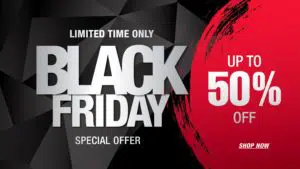
Notifying subscribers of special offers based on the upcoming holidays of the year is an old but effective email marketing strategy. Some of the seasons you want to remind them to include:
- Black Friday sale
- After-Christmas sale
- Spring clearance sale
Newsletter
A regular newsletter is critical to telling your brand’s story. The stories will serve to stay in contact and build closer connections with customers without relying on discounts or promotions.
Content update
Email is the life of new content.
Consider marketing automation over email if you’re already using content to educate current customers and reach new ones.
Lifecycle Emails
Lifecycle emails are powerful because they’re personal and targets a segment of your subscribers with a targeted message depending on their behavior. They include:
- Abandoned cart email
- Welcome emails series
- Win-back emails
Each of the emails presents an opportunity for customer retention and satisfaction.
Shopping cart abandonment emails
On average, 60%-80% of people on an online store abandon their carts. You can win a few of those potential customers back with an email.
Ways to improve cart abandonment emails
- Put the main message in text format (to allow customers to see it without enabling images. Remember to include a link to their shopping cart).
- Remind the customer about items in their cart (to spark their excitement again).
- Consider communicating a specific incentive to return to their cart (like free shipping or discounts)
- Use a clear call-to-action (limit yourself to a single call to action)
You may also like – Ecommerce SEO: How to Get Targeted Traffic (Customers) From Google Searches
Welcome Email Series
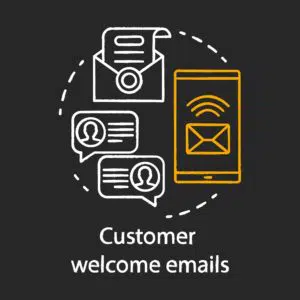
Welcome emails are the ones you send for new subscribers. They have high open rates and generally produce 3-6 times more sales than regular promotional emails.
How to improve Welcome Email Series
- Provide value upfront (to create a strong first impression)
- Send welcome email within minutes
- Set transparent expectations (Allow your subscribers to change preference easily informing them how frequent you’ll be emailing new content)
Win-Back Series Emails
Win-back emails aim at luring lapsed customers back to positive purchasing behavior.
How to Improve Win-Back Series Emails
- Test early so you don’t leave money on the table
- After 90 days of inactivity, the outlook isn’t good (the odds of the customer returning to purchase are not great)
eCommerce Email Marketing Summary
Emails marketing works great for eCommerce sites. You should try it because:
- It presents higher ROI than many other marketing channels
- You own the distribution channel
- You can run different types of campaigns at the same time
All you need is to get started.
Related – Ecommerce Marketing Essentials: 17 Actionable Tactics to Drive More Sales



